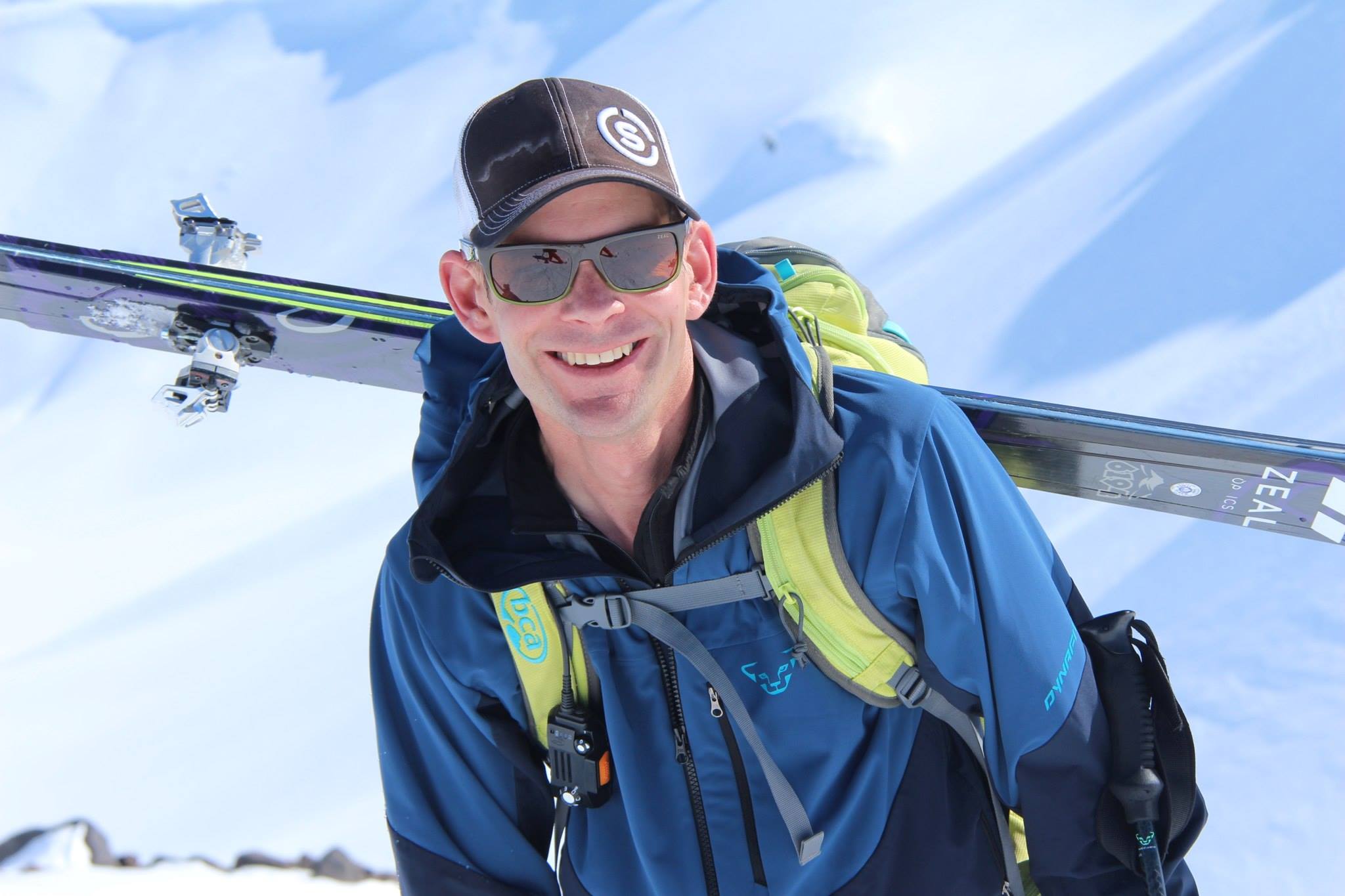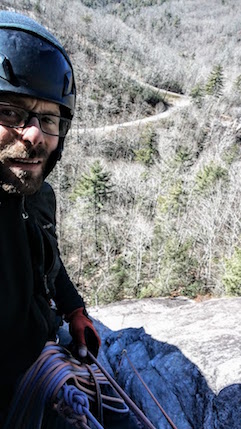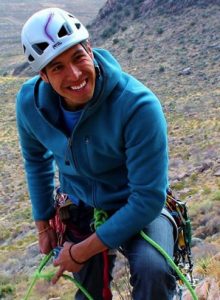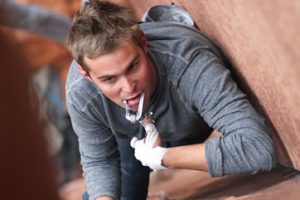Spoiler Alert: I passed my AMGA Rock Guide Aspirant Exam
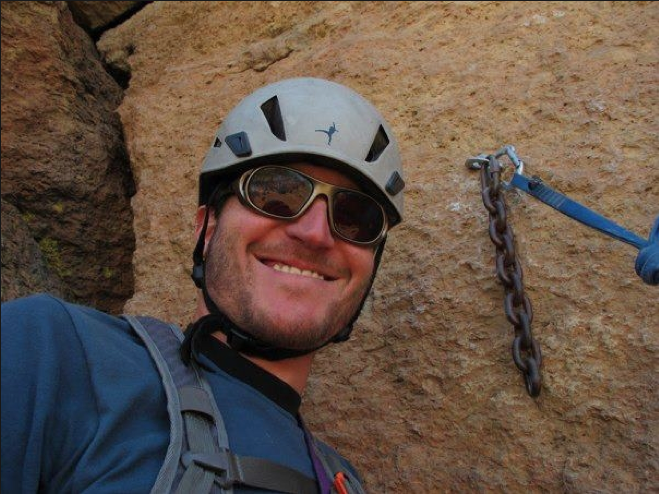 By Cliff Agocs, the 2012 Marmot Scholarship recipient
By Cliff Agocs, the 2012 Marmot Scholarship recipient
The pressure was on after receiving the Marmot scholarship. It wasn’t about my money anymore. Now it was about my reputation. If I fail, I reasoned, they’ll never give me another scholarship. I practiced rock-rescue all winter long. My climbing partners grew suspicious every time I suggested a trip to the crag. By spring my girlfriend and my roommate were all too familiar with dangling for 45 minutes at a time. I was relegated to rescuing my haul-bag. And by spring I was ready for real climbing. I arrived in Red Rocks two weeks ahead of the course and began to get comfortable with the thin sandstone edges. By the time the course started I was mentally prepared.
Our instructors, Art Mooney and John Kear, immediately put us at ease. There were four candidates. We all felt lucky to be on a course with a 2:1 ratio. This fact made every belay-ledge a one-on-one classroom. Our first day of review went quickly, and despite having a great day, we were all a bit nervous about the qualifying exams on the second day. Art suggested we limit ourselves to one cup of coffee. But there were no jitters–caffeine or otherwise. All of the candidates in the spring Rock Guide Course came to play. We put on our wind layers and executed the skills required to descend with an injured second. We finished up by mid-day and headed to the well-known AMGA test-piece, The Fox. The four candidates took turns sending the line in good style–while the instructors watched and occasionally heckled. With that we headed back to Cannibal Crag and clipped our way up some 5.11 routes. We pulled our ropes in a whipping wind, knowing we were all prepared for the days ahead. But the forecast was for marginal weather on the horizon
We decided to take advantage of the last sunny day on the Angel Food Wall. Both teams linked-up Purblind Pillar and Group Therapy. The descents got us warmed up for the days of short roping ahead. We awoke the next day with our sites set on a big link-up. The approach to Black Orpheus followed by a reverse of the descent from Cactus Flower Tower. For Las Vegas extreme hikers this is the equivalent of the Nose-NWF of Half Dome… in a day! But the desert balked. By the top of our first lap it was snowing on us. Water poured down the sandstone slabs in sheets. We did what any climbers would in our situation–we descended and drank beer. Two days later, we took on the reverse Cactus Flower Tower, and again descended in the rain. But the system was passing, and we were in for increasingly good weather as the course went on.
The following days of guiding were a blur of jams, crimps, chimneys, and, occasionally, scrub oak. Link-ups like Buelah’s Book to Sundog tested our ability to manage technical descents and transition in and out of short roping. While Triassic Sands and La Cierta Edad had me wearing my trad-climbing pants up until day 10. Despite the standard of 5.10+, John Kear looked for opportunities to push us into more difficult terrain within our abilities. He encouraged fellow candidate Mike Lewis and I to guide Tooth or Consequences. At 5.11c, the result of our success was increased confidence guiding in difficult terrain. We received constant feedback during the course, and our IFMGA mentors were constantly helping us refine our techniques to make our guiding more efficient. I walked away from the course with greater command of technical systems, but even more important was the experience guiding on Grade IV terrain. To do so requires a high level of efficiency while maintaining client care and team security. Spending ten days with guides of the highest credentials allows a great deal of practice. Now that I’ve returned to guiding for the summer season, I can feel how the course has impacted the way I view transitions and movement in alpine and rock terrain. I look forward to my Rock Guide Exam, the next course, and of course, the next scholarship!
Clif works for Timberline Mountain Guides. Find out more about him by clicking here, or check out his WordPress blog by clicking here.








